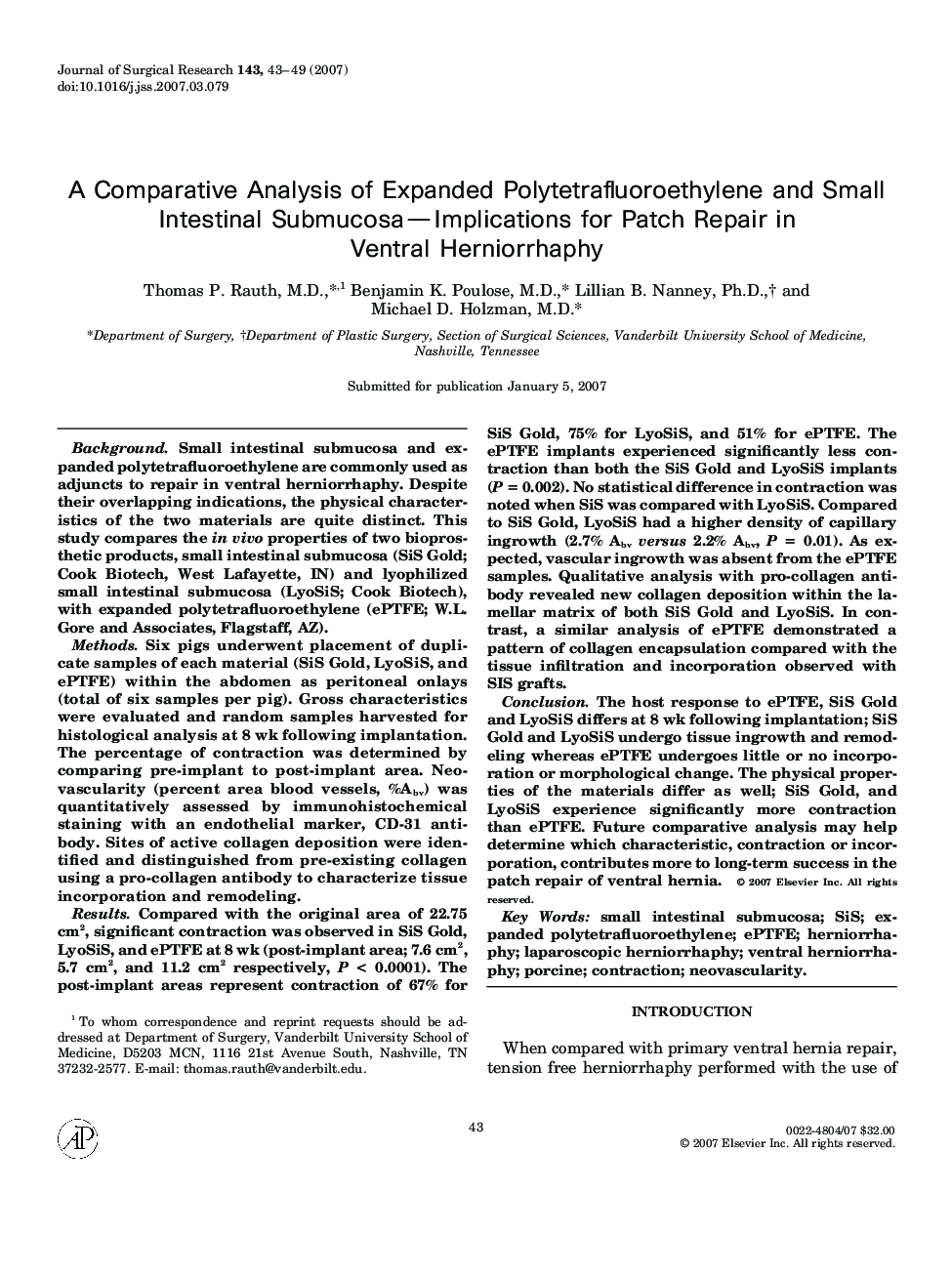| Article ID | Journal | Published Year | Pages | File Type |
|---|---|---|---|---|
| 4304133 | Journal of Surgical Research | 2007 | 7 Pages |
BackgroundSmall intestinal submucosa and expanded polytetrafluoroethylene are commonly used as adjuncts to repair in ventral herniorrhaphy. Despite their overlapping indications, the physical characteristics of the two materials are quite distinct. This study compares the in vivo properties of two bioprosthetic products, small intestinal submucosa (SiS Gold; Cook Biotech, West Lafayette, IN) and lyophilized small intestinal submucosa (LyoSiS; Cook Biotech), with expanded polytetrafluoroethylene (ePTFE; W.L. Gore and Associates, Flagstaff, AZ).MethodsSix pigs underwent placement of duplicate samples of each material (SiS Gold, LyoSiS, and ePTFE) within the abdomen as peritoneal onlays (total of six samples per pig). Gross characteristics were evaluated and random samples harvested for histological analysis at 8 wk following implantation. The percentage of contraction was determined by comparing pre-implant to post-implant area. Neovascularity (percent area blood vessels, %Abv) was quantitatively assessed by immunohistochemical staining with an endothelial marker, CD-31 antibody. Sites of active collagen deposition were identified and distinguished from pre-existing collagen using a pro-collagen antibody to characterize tissue incorporation and remodeling.ResultsCompared with the original area of 22.75 cm2, significant contraction was observed in SiS Gold, LyoSiS, and ePTFE at 8 wk (post-implant area; 7.6 cm2, 5.7 cm2, and 11.2 cm2 respectively, P < 0.0001). The post-implant areas represent contraction of 67% for SiS Gold, 75% for LyoSiS, and 51% for ePTFE. The ePTFE implants experienced significantly less contraction than both the SiS Gold and LyoSiS implants (P = 0.002). No statistical difference in contraction was noted when SiS was compared with LyoSiS. Compared to SiS Gold, LyoSiS had a higher density of capillary ingrowth (2.7% Abvversus 2.2% Abv, P = 0.01). As expected, vascular ingrowth was absent from the ePTFE samples. Qualitative analysis with pro-collagen antibody revealed new collagen deposition within the lamellar matrix of both SiS Gold and LyoSiS. In contrast, a similar analysis of ePTFE demonstrated a pattern of collagen encapsulation compared with the tissue infiltration and incorporation observed with SIS grafts.ConclusionThe host response to ePTFE, SiS Gold and LyoSiS differs at 8 wk following implantation; SiS Gold and LyoSiS undergo tissue ingrowth and remodeling whereas ePTFE undergoes little or no incorporation or morphological change. The physical properties of the materials differ as well; SiS Gold, and LyoSiS experience significantly more contraction than ePTFE. Future comparative analysis may help determine which characteristic, contraction or incorporation, contributes more to long-term success in the patch repair of ventral hernia.
